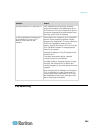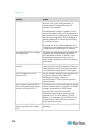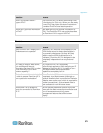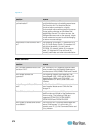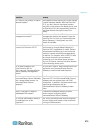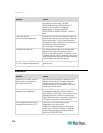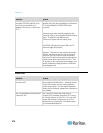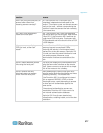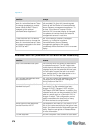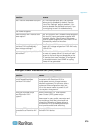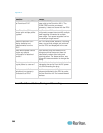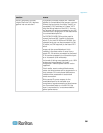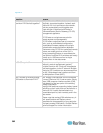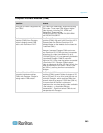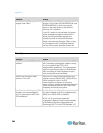
Appendix F:
377
Question
Answer
When I am using the local port, do
I prevent other users from
accessing servers remotely?
No. The Dominion KX II local port has a
completely independent access path to the
servers. This means a user can access servers
locally at the rack – without compromising the
number of users that access the rack remotely
at the same time.
Can I use a USB keyboard or
mouse at the local port?
Yes. The Dominion KX II has USB keyboard
and mouse ports on the local port. Note that as
of April 2011, the Dominion KX II switches no
longer have PS/2 local ports. Customers with
PS/2 keyboards and mice should utilize a PS/2
to USB adapter.
Is there an onscreen display
(OSD) for local, at-the-rack
access?
Yes, but Dominion KX II’s at-the-rack access
goes way beyond conventional OSDs.
Featuring the industry’s first browser-based
interface for at-the-rack access, Dominion KX
II’s local port uses the same interface for local
and remote access. Moreover, most
administrative functions are available at the
rack.
How do I select between servers
while using the local port?
The local port displays the connected servers
using the same user interface as the remote
client. Users connect to a server with a simple
click of the mouse or via a hotkey.
How do I ensure that only
authorized users can access
servers from the local port?
Users attempting to use the local port must
pass the same level of authentication as those
accessing remotely. This means that:
If the Dominion KX II is configured to interact
with an external RADIUS, LDAP or Active
Directory® server, users attempting to access
the local port will authenticate against the
same server.
If the external authentication servers are
unavailable, Dominion KX II fails over to its
own internal authentication database.
Dominion KX II has its own stand-alone
authentication, enabling instant, out-of-the-box
installation.



